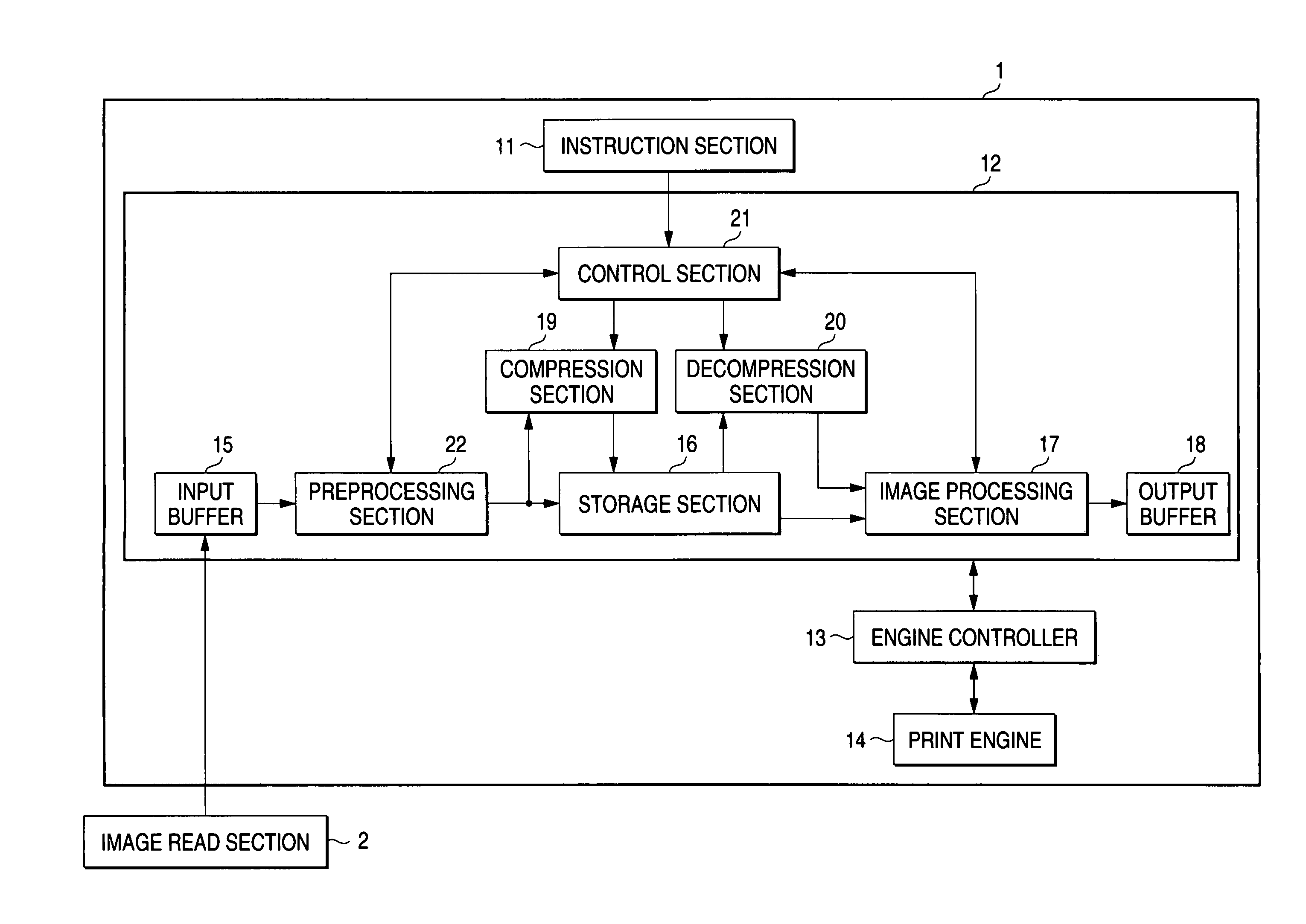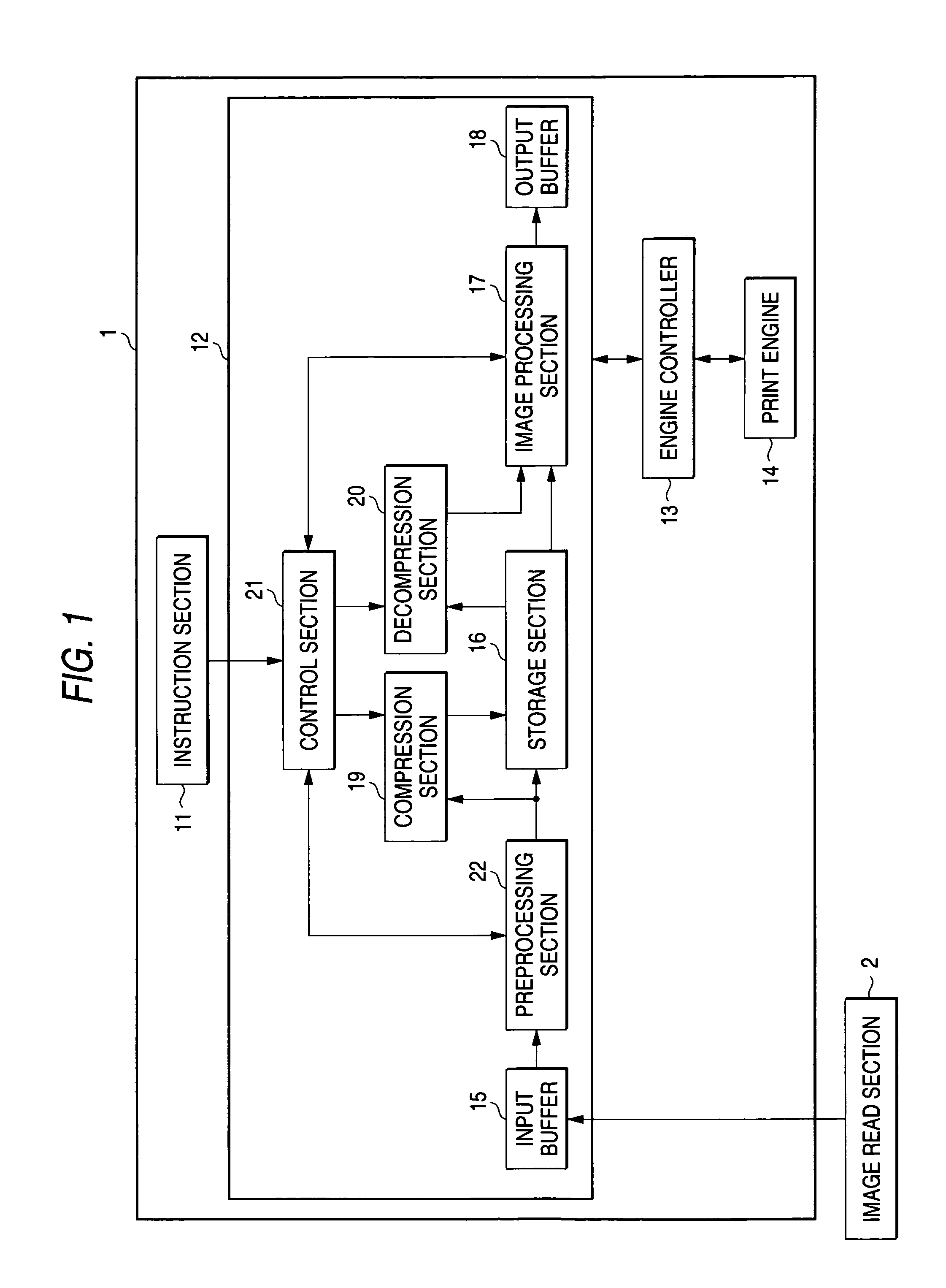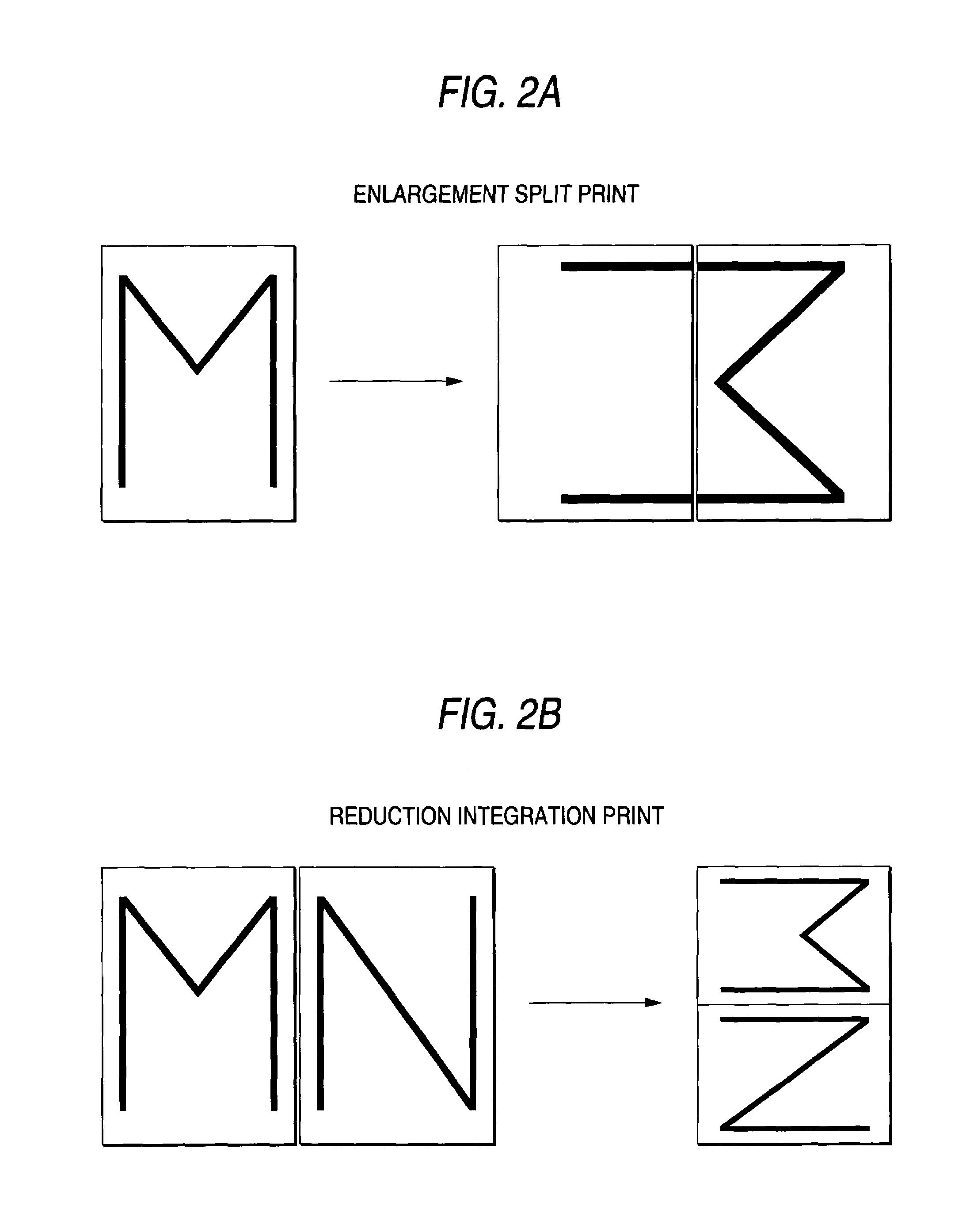Print system
a printing system and printing technology, applied in the field of printing systems, can solve the problems of reducing and printing a large number of source prints on one page, and increasing costs, and achieve the effect of small memory capacity and small memory capacity
- Summary
- Abstract
- Description
- Claims
- Application Information
AI Technical Summary
Benefits of technology
Problems solved by technology
Method used
Image
Examples
first embodiment
1. First Embodiment
[0035]FIG. 1 is a block diagram to show the general configuration of a print system according to a first embodiment of the invention.
[0036]The print system according to the embodiment comprises a printer limplemented, for example, as a color laser printer, a color ink jet printer, or the like and an image read section 2 limplemented, for example, as a scanner, a digital camera, or the like. The image read section 2 as “image read means” may be integral with the printer 1 or may be separate from the printer 1.
[0037]The printer 1 comprises an instruction section 11, a printer controller 12, an engine controller 13, and a print engine 14. The instruction section 11 as “instruction means” can be provided on an operation panel of the printer 1, for example. Alternatively, it can also be placed in a host computer. The user can set the print mode of enlargement or reduction, the scaling factor, the number of copies, etc., through the instruction section 11.
[0038]The prin...
second embodiment
2. Second Embodiment
[0053]Next, a second embodiment of the invention will be discussed with reference to FIG. 5. Parts identical with those previously described with reference to the figures are denoted by the same reference numerals in the second embodiment and will not be discussed again. The embodiment is characterized by the fact that whether or not a blank page occurs is checked when enlargement split print is executed for preventing fruitless print.
[0054]FIG. 5 is a flowchart of enlargement split print processing in the second embodiment of the invention. The processing includes all steps of S1 to S14 shown in FIG. 3. In addition, in the processing, after termination of image layout and enlargement at steps S11 and S12, whether or not a blank page exists is determined at step S31 and if a blank page exists (YES at step S31), print of the black page is canceled at step S32. For example, as shown in FIG. 6, a blank page can occur as shown on the right of the figure depending on ...
PUM
 Login to View More
Login to View More Abstract
Description
Claims
Application Information
 Login to View More
Login to View More - R&D
- Intellectual Property
- Life Sciences
- Materials
- Tech Scout
- Unparalleled Data Quality
- Higher Quality Content
- 60% Fewer Hallucinations
Browse by: Latest US Patents, China's latest patents, Technical Efficacy Thesaurus, Application Domain, Technology Topic, Popular Technical Reports.
© 2025 PatSnap. All rights reserved.Legal|Privacy policy|Modern Slavery Act Transparency Statement|Sitemap|About US| Contact US: help@patsnap.com



